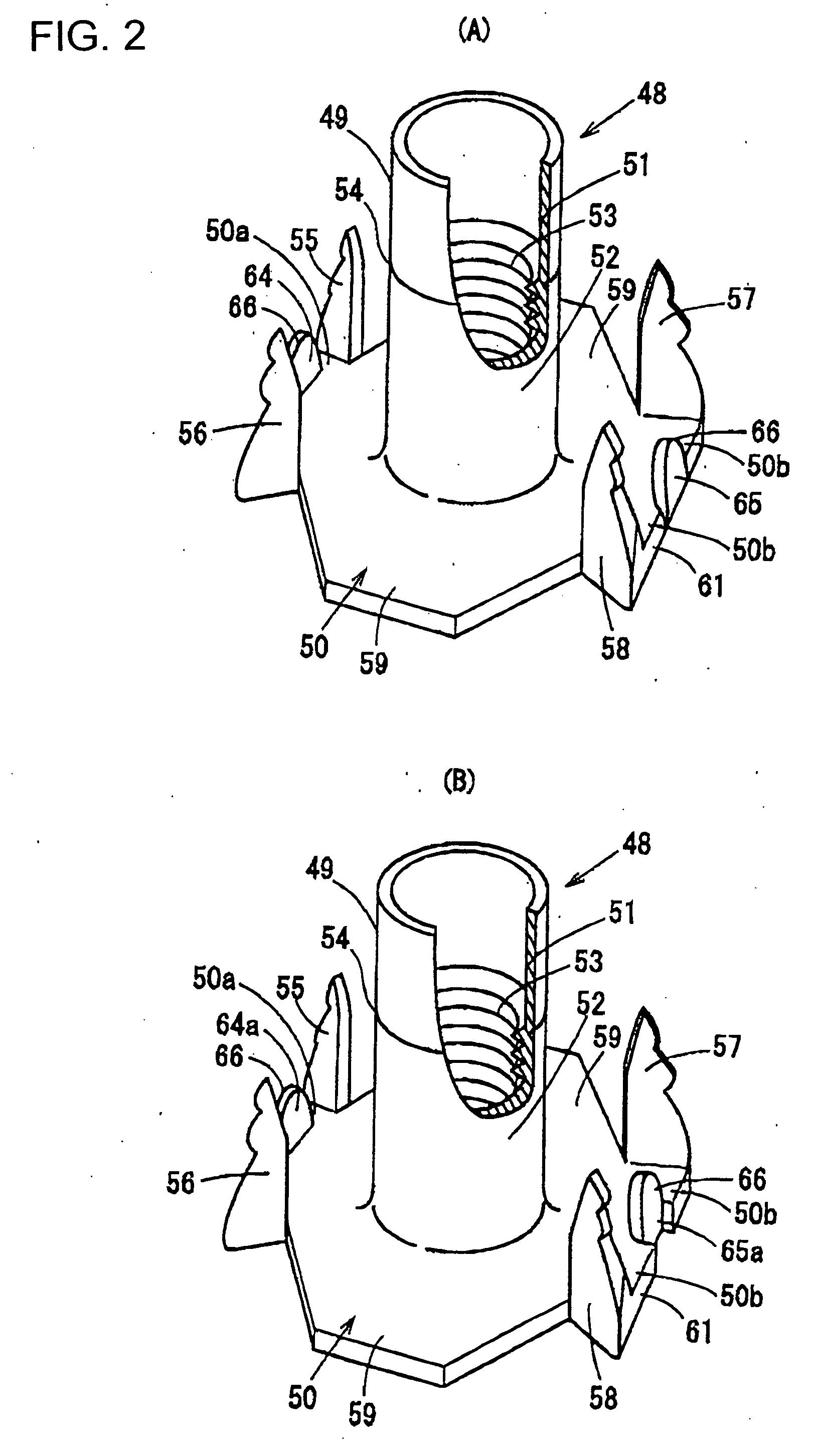T-nut for hopper feeding having a projection
a technology of hopper feeding and t-nut, which is applied in the field of t-nut, can solve problems such as overlaying
- Summary
- Abstract
- Description
- Claims
- Application Information
AI Technical Summary
Benefits of technology
Problems solved by technology
Method used
Image
Examples
Embodiment Construction
[0110] The t-nut of the present invention is described in detail based on preferred embodiments is as follows. FIGS. 1 to 6 show a first embodiment of the t-nut 48 of the present invention.
[0111] The t-nut can be obtained integrally formed by, for example, processing a metal plate of a ferric series, so as to have a shank portion 49 and a flanged portion 50. The shank portion 49 has a first end and a second end. The flange portion 50 is projected horizontally and outwardly from the first end of the shank portion 49.
[0112] The shank portion 49, having a first end and a second end, is shaped into a cylindrical tube, so as to have a hollow portion therein. The shank portion 49 closer to the second end is pressed to form a caulking portion 51. On the other hand, the shank portion 49 closer to the first end, that is a base portion, is formed to have a female screw on the inside surface of the cylindrical tube of the shank portion 49. Thus, the inner surface of the base portion has a fe...
PUM
 Login to View More
Login to View More Abstract
Description
Claims
Application Information
 Login to View More
Login to View More - R&D
- Intellectual Property
- Life Sciences
- Materials
- Tech Scout
- Unparalleled Data Quality
- Higher Quality Content
- 60% Fewer Hallucinations
Browse by: Latest US Patents, China's latest patents, Technical Efficacy Thesaurus, Application Domain, Technology Topic, Popular Technical Reports.
© 2025 PatSnap. All rights reserved.Legal|Privacy policy|Modern Slavery Act Transparency Statement|Sitemap|About US| Contact US: help@patsnap.com



